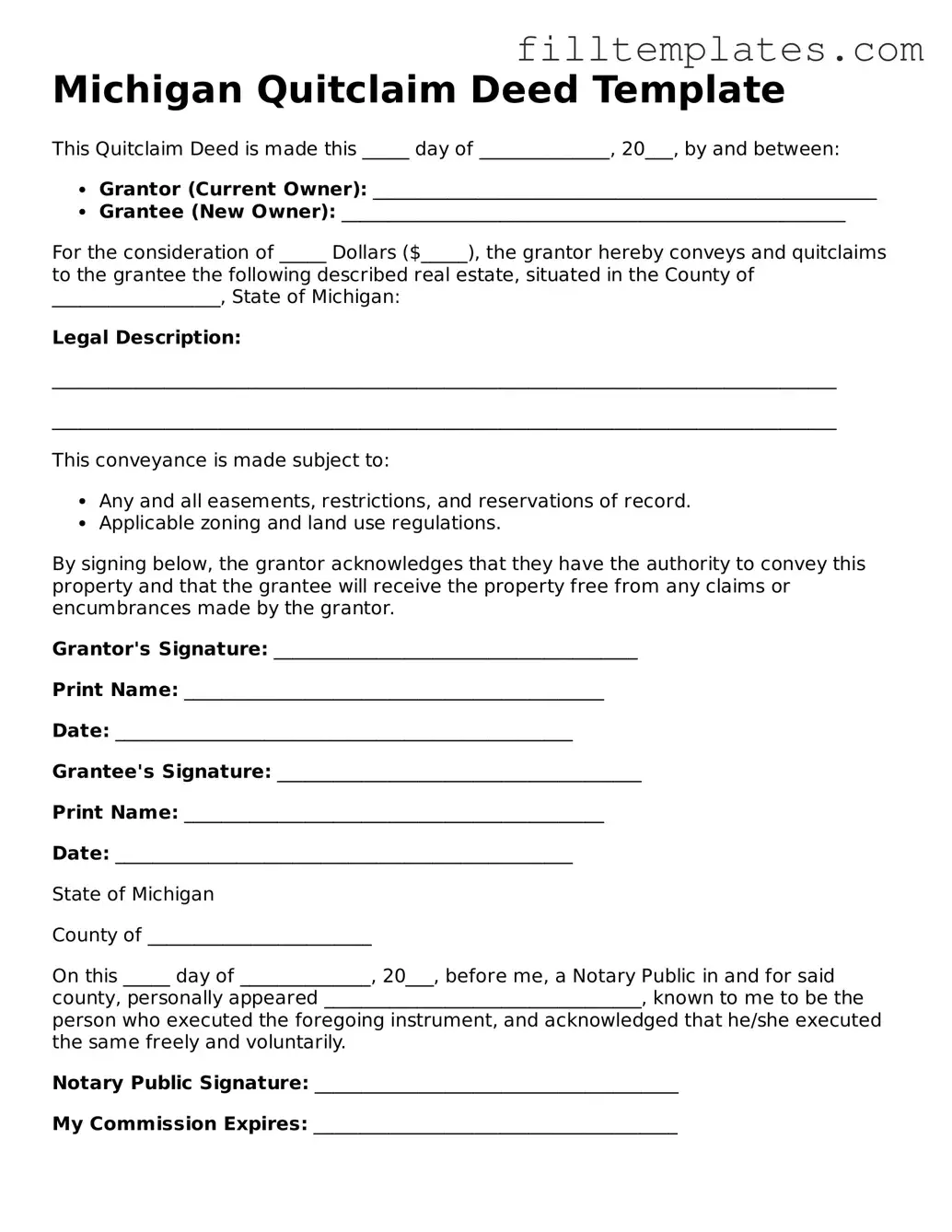Michigan Quitclaim Deed Template
This Quitclaim Deed is made this _____ day of ______________, 20___, by and between:
- Grantor (Current Owner): ______________________________________________________
- Grantee (New Owner): ______________________________________________________
For the consideration of _____ Dollars ($_____), the grantor hereby conveys and quitclaims to the grantee the following described real estate, situated in the County of __________________, State of Michigan:
Legal Description:
____________________________________________________________________________________
____________________________________________________________________________________
This conveyance is made subject to:
- Any and all easements, restrictions, and reservations of record.
- Applicable zoning and land use regulations.
By signing below, the grantor acknowledges that they have the authority to convey this property and that the grantee will receive the property free from any claims or encumbrances made by the grantor.
Grantor's Signature: _______________________________________
Print Name: _____________________________________________
Date: _________________________________________________
Grantee's Signature: _______________________________________
Print Name: _____________________________________________
Date: _________________________________________________
State of Michigan
County of ________________________
On this _____ day of ______________, 20___, before me, a Notary Public in and for said county, personally appeared __________________________________, known to me to be the person who executed the foregoing instrument, and acknowledged that he/she executed the same freely and voluntarily.
Notary Public Signature: _______________________________________
My Commission Expires: _______________________________________
